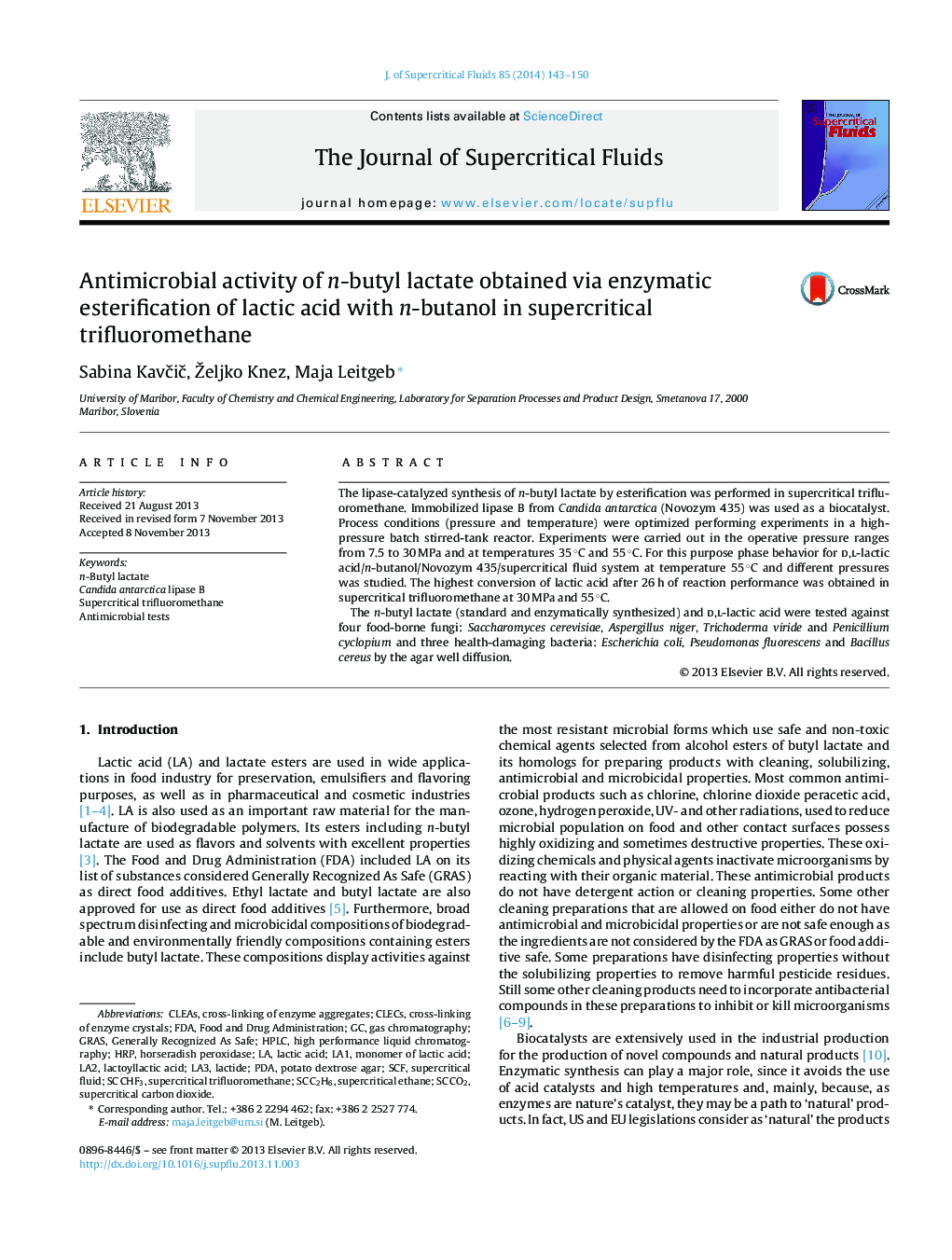| Article ID | Journal | Published Year | Pages | File Type |
|---|---|---|---|---|
| 230695 | The Journal of Supercritical Fluids | 2014 | 8 Pages |
•Lipase-catalyzed esterification of n-butyl lactate in different SCFs was performed.•Direct esterification catalyzed by immobilized lipase B from Candida antarctica.•Optimal reaction conditions in SC CHF3 (pressure and temperature) were determined.•The antimicrobial activity of n-butyl lactate was detected.
The lipase-catalyzed synthesis of n-butyl lactate by esterification was performed in supercritical trifluoromethane. Immobilized lipase B from Candida antarctica (Novozym 435) was used as a biocatalyst. Process conditions (pressure and temperature) were optimized performing experiments in a high-pressure batch stirred-tank reactor. Experiments were carried out in the operative pressure ranges from 7.5 to 30 MPa and at temperatures 35 °C and 55 °C. For this purpose phase behavior for d,l-lactic acid/n-butanol/Novozym 435/supercritical fluid system at temperature 55 °C and different pressures was studied. The highest conversion of lactic acid after 26 h of reaction performance was obtained in supercritical trifluoromethane at 30 MPa and 55 °C.The n-butyl lactate (standard and enzymatically synthesized) and d,l-lactic acid were tested against four food-borne fungi: Saccharomyces cerevisiae, Aspergillus niger, Trichoderma viride and Penicillium cyclopium and three health-damaging bacteria: Escherichia coli, Pseudomonas fluorescens and Bacillus cereus by the agar well diffusion.
Graphical abstractFigure optionsDownload full-size imageDownload as PowerPoint slide
